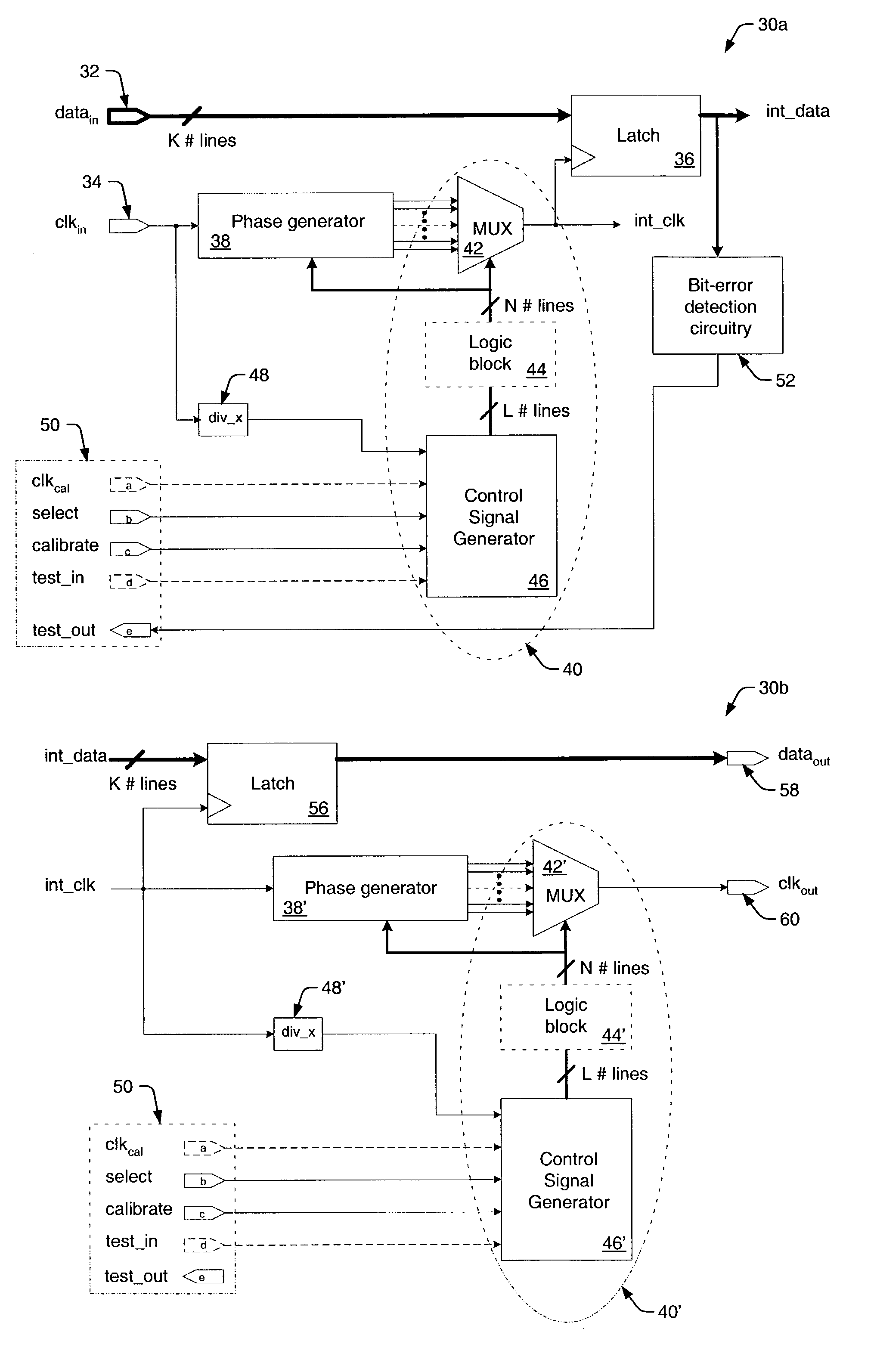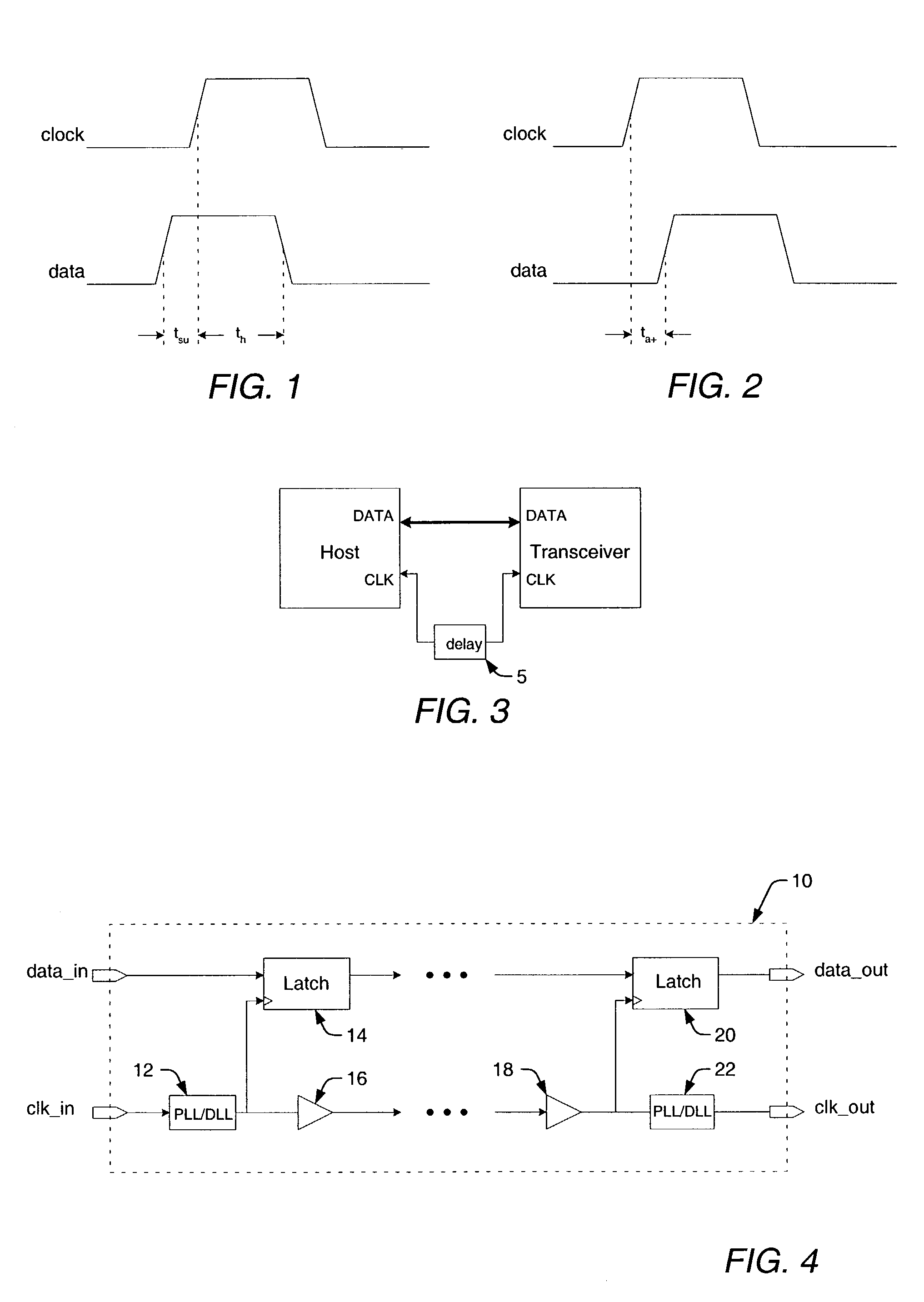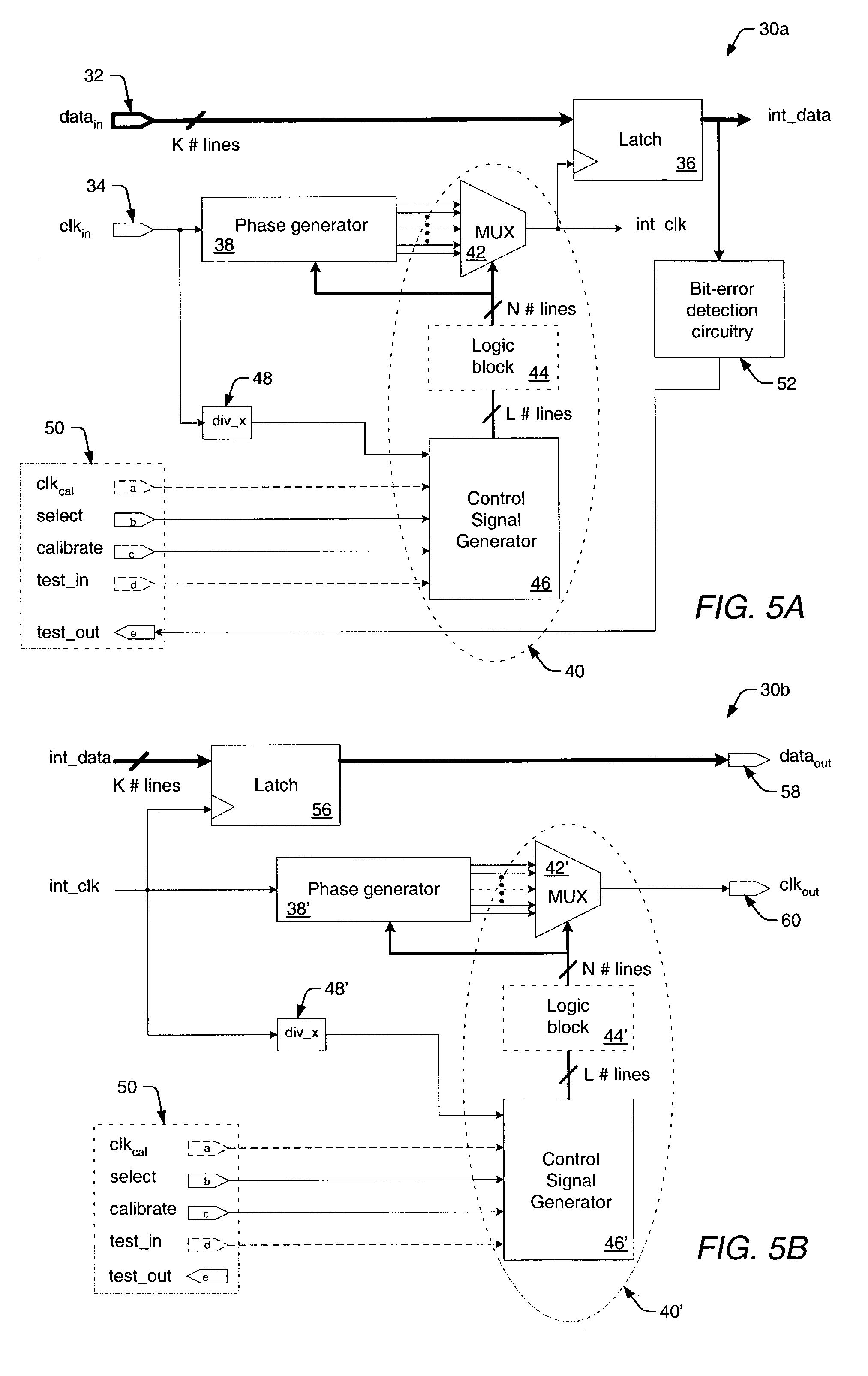Parallel data interface and method for high-speed timing adjustment
a data interface and parallel data technology, applied in the field of data interfaces, can solve the problems of significantly affecting system performance and/or reliability, the amount of time is comparable to the propagation delay, and the high-speed synchronous system cannot afford significant skewing of the clock signal, so as to reduce the overall power consumed by the data interface and provide flexibility to users
- Summary
- Abstract
- Description
- Claims
- Application Information
AI Technical Summary
Benefits of technology
Problems solved by technology
Method used
Image
Examples
Embodiment Construction
[0045]Error-free data transmission is typically a major design goal for any synchronous system. In high-speed synchronous systems that transmit data over a parallel bus, however, several factors may interfere with obtaining such a design goal. In addition to clock skew, random noise induced within the parallel data bus may adversely effect data transmission. For example, bit errors may result if a sufficient amount of noise is induced within the data bus when the data signal is sampled. In general, noise may be induced in the form of data skew and / or jitter within one or more paths of the parallel data bus. Although they are often caused by similar sources, distinct differences exist between data skew and jitter.
[0046]Data skew is often defined by variations between one data path and another. For example, individual paths of a parallel data bus are generally routed within close proximity to each other. As such, signals traversing a given data path may be adversely affected by noise,...
PUM
 Login to View More
Login to View More Abstract
Description
Claims
Application Information
 Login to View More
Login to View More - R&D
- Intellectual Property
- Life Sciences
- Materials
- Tech Scout
- Unparalleled Data Quality
- Higher Quality Content
- 60% Fewer Hallucinations
Browse by: Latest US Patents, China's latest patents, Technical Efficacy Thesaurus, Application Domain, Technology Topic, Popular Technical Reports.
© 2025 PatSnap. All rights reserved.Legal|Privacy policy|Modern Slavery Act Transparency Statement|Sitemap|About US| Contact US: help@patsnap.com



